
Lisa Grossman is the astronomy writer for Science News. Previously she was a news editor at New Scientist, where she ran the physical sciences section of the magazine for three years. Before that, she spent three years at New Scientist as a reporter, covering space, physics and astronomy. She has a degree in astronomy from Cornell University and a graduate certificate in science writing from UC Santa Cruz. Lisa was a finalist for the AGU David Perlman Award for Excellence in Science Journalism, and received the Institute of Physics/Science and Technology Facilities Council physics writing award and the AAS Solar Physics Division Popular Writing Award. She interned at Science News in 2009-2010.

Trustworthy journalism comes at a price.
Scientists and journalists share a core belief in questioning, observing and verifying to reach the truth. Science News reports on crucial research and discovery across science disciplines. We need your financial support to make it happen – every contribution makes a difference.
All Stories by Lisa Grossman
-
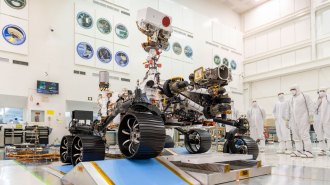 Planetary Science
Planetary ScienceMeet Perseverance, NASA’s newest Mars rover
NASA’s next Mars rover will be called Perseverance.
-
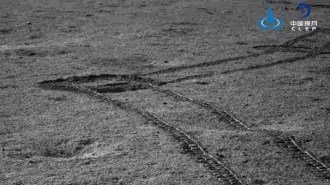 Planetary Science
Planetary ScienceChina’s moon rover revealed what lies beneath the lunar farside
China’s Yutu-2 rover found layers of fine sand and coarse gravel under the surface of the moon’s farside.
-
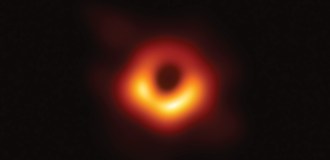 Space
Space2019 brought us the first image of a black hole. A movie may be next
The Event Horizon Telescope team is gearing up for more black hole discoveries.
-
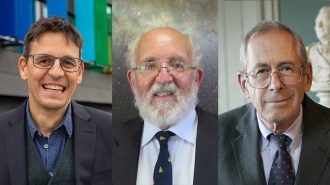 Physics
PhysicsPhysics Nobel awarded for discoveries about the universe’s evolution and exoplanets
Three scientists share the 2019 Nobel Prize in physics for revealing what makes up our cosmos and for finding the first planet orbiting a sunlike star.
-
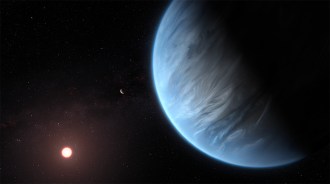 Space
SpaceWhy just being in the habitable zone doesn’t make exoplanets livable
A reignited debate over whether a new planet is habitable highlights the difficult science of seeking alien life.
-
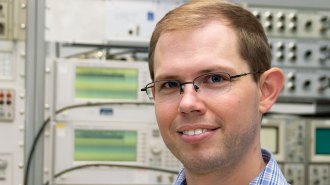 Chemistry
ChemistryBrett McGuire searches space for the chemistry of life
The complex molecules Brett McGuire has discovered in interstellar space may point to the origins of carbon-based life.
-
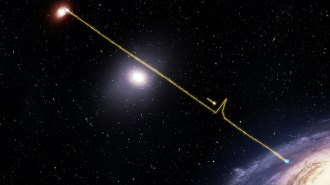 Space
SpaceThis fast radio burst shined a light on a galaxy’s mysterious gas halo
A lucky alignment let astronomers probe one galaxy’s diffuse gas using a brief, bright blast from a more distant galaxy.
-
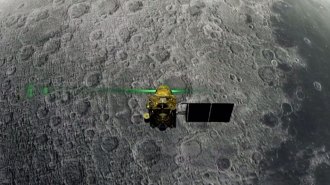 Planetary Science
Planetary ScienceIndia’s first attempt to land on the moon appears to have failed
Indian scientists haven’t heard from the Vikram lander for a full lunar day, after they lost contact during the robotic spacecraft’s descent.
-
 Astronomy
AstronomyHow an astrophysicist chased a star from the Halo games to real life
Julián Alvarado Gómez has devoted his career to a star called Iota Horologii. His former life as a Halo video gamer helps fuel that devotion.
-
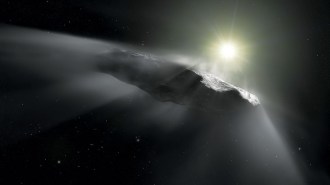 Planetary Science
Planetary ScienceAstronomers have spotted a second interstellar object
Researchers will be able to watch what appears to be an interstellar comet swoop through the solar system for about a year.
-
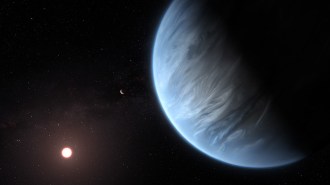 Astronomy
AstronomyThis may be the first known exoplanet with rain and clouds of water droplets
For the first time, astronomers have detected water vapor and possibly signs of clouds and even rain in the air of a potentially habitable exoplanet.
-
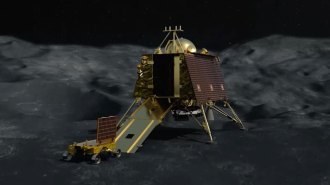 Space
SpaceIndia lost contact with its first lunar lander just before touchdown
Chandrayaan 2 mission officials are trying to figure out why its rover-carrying lander went silent moments before it was to reach the moon’s surface.